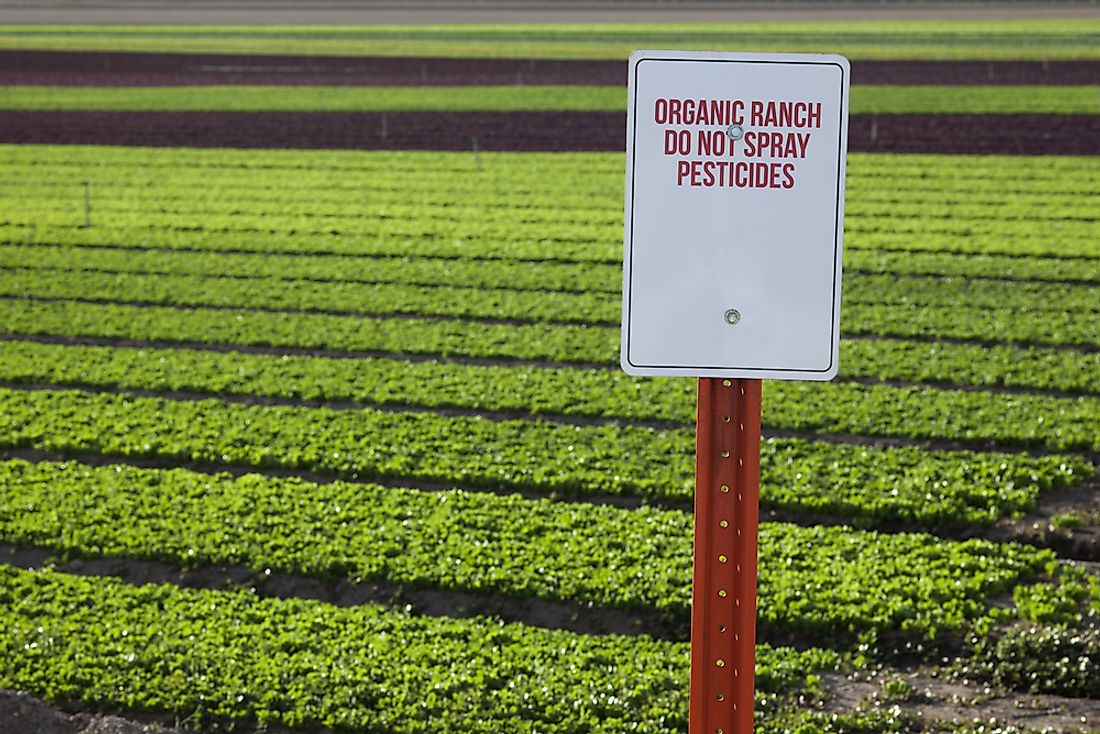Top North and South American Countries For Organic Farming

Organic farming is a method of agriculture focused on the ethical and social aspects of food production rather than simply profits. It prohibits the use of growth hormones, artificial preservatives, pesticides, genetically modified substances, antibiotics, intensive livestock production, and fertilizers. In North America and South America, the top organic farming countries are Argentina, the United States, Uruguay, and Canada. Governments of these nations are keen on supporting organic farming because it is a more sustainable method of food production.
Organic Farming in the Americas
Argentina
Argentina contains 3,637,460 hectares of land used for organic farming. By land area, Argentina has the most land devoted to organic farming in the world. In fact, the country's organic sector has grown exponentially since its beginnings in 1985. The primary organic crops produced in Argentina include sugarcane, raw wool, fruits, vegetables, and beans. The primary organic exports are soy, corn, sunflower, and wheat. Argentina is viable for organic farming due to its virgin land, good drainage, adequate good rainfall.
United States
The United States has 2,178,471 hectares of land cultivated by organic farmers. Organic farming in the United States started in the 1940s and was pioneered by J. J. Rodale, who was also the founder of the Rodale Research Institute of Kutztown, Pennsylvania. Many years later, the institute still promotes organic farming. Some of the primary organic farming states include North Dakota, Montana, California, New York, and Wisconsin. The US has experienced increasing demand for organic products, and therefore organic farming is becoming a significant method of agriculture. Experts have supported this focus on organic farming, as they believe that it is more sustainable than conventional farming.
Uruguay
Uruguay has 930,965 hectares of land used for organic farming. Organic agriculture is facilitated by an organization known as the Organic Farmers' Association of Uruguay. Certification for organic farming is granted to farmers who can prove that they have refrained from the use of chemical products for three years. Uruguay has recently become a popular destination for agritourism and rural tourism. In fact, more than 100 farms, businesses, and estancias are dedicated to rural tourism, which involves a “country experience” facilitated by villagers who are often very hospitable.
Canada
With a total of 833,883 hectares, Canada has the fourth largest land area among North and South American countries devoted to for organic farming. Organic agriculture in Canada began in the 1950s, and was introduced by Rudolf Steiner, Winfried Pfeiffer, and Albert Howard. Some of the organic products grown in Canada include lentils, fruits, wheat, barley, vegetables, fruits, and animal products.
Challenges of Organic Farming in North and South America
The first challenge of organic farming in North and South America is the lack of accessible markets for organic livestock. Second, there exists intense competition between organic products and those labeled “natural.” Third, in recent times corporate interests have been purchasing land used for organic farming, and as a result experienced farmers are being displaced by laborers who do not understand the importance of organic farming.
Top North and South American Countries for Organic Farming
| Rank | Country | Organic Farming Area (hectares) |
|---|---|---|
| 1 | Argentina | 3,637,466 |
| 2 | United States | 2,178,471 |
| 3 | Uruguay | 930,965 |
| 4 | Canada | 833,883 |
| 5 | Brazil | 705,233 |
| 6 | Mexico | 487,393 |
| 7 | Falkland Islands | 403,212 |
| 8 | Peru | 197,837 |
| 9 | Dominican Repubic | 168,978 |
| 10 | Ecuador | 56,303 |
| 11 | Paraguay | 51,190 |
| 12 | Colombia | 34,060 |











